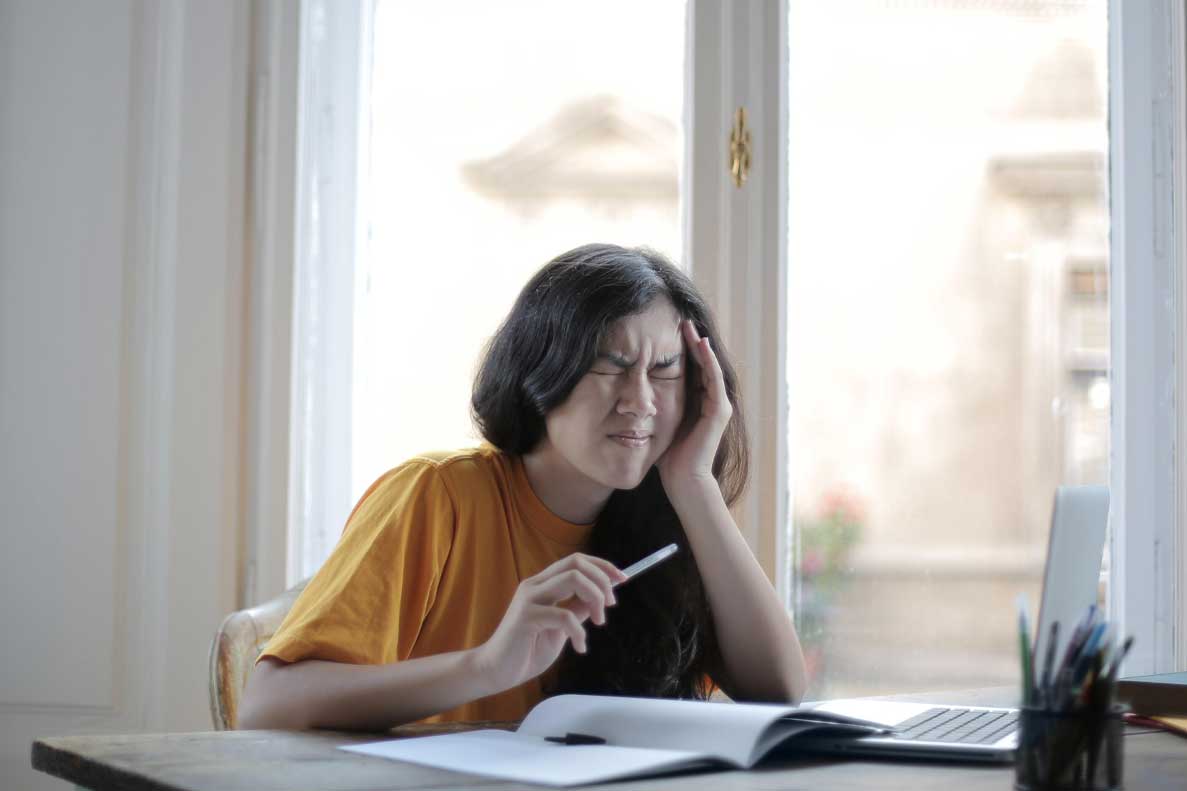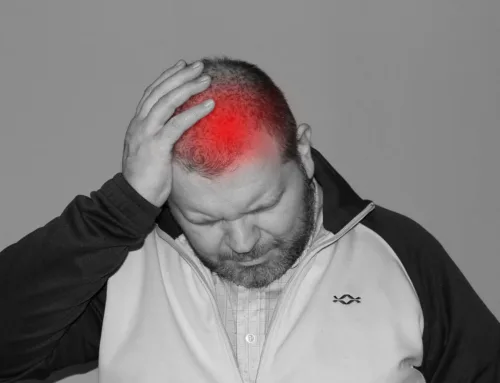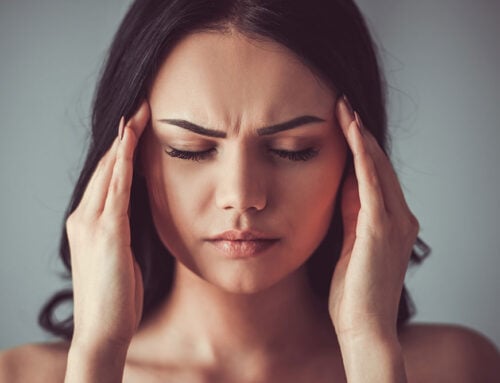A migraine is a debilitating headache that often causes severe throbbing pain or a pulsating sensation, typically on one side of the head. Light sensitivity, also called photophobia, often occurs with migraine headaches and can be described as abnormally high sensitivity to light. While many people can be sensitive to intense, bright light, for people who experience photophobia with their migraines, even natural light can exacerbate their headache.
What’s more, many people who experience migraine also report bright lights as their migraine trigger, and stay in a dark room for the duration of their migraine headache in order to seek relief. In this article, we will discuss light sensitivity migraines, as well as their common causes, and treatment and prevention strategies.
What are the causes of light sensitivity headaches?
Photophobia and migraine headaches often co-occur, while individuals suffering from photophobia are typically sensitive to bright lighting, as well as changes in lighting, and flickering lights. In addition, for some people, migraine headache symptoms can increase due to lighting conditions.
Photophobia is also considered one of the most common symptoms of migraine headaches and accordingly, it is used by medical professionals as one of the diagnostic criteria.
It is still unclear why some people experience photophobia before, during, or after migraine headaches. According to medical research, this could be because migraine changes the way the brain processes sensory information. Furthermore, migraine headaches may also lower brain cells’ sensitivity threshold for various stimuli.
What are other conditions linked to photophobia?
In addition to migraines, there are some other types of headaches associated with photophobia, including cluster and tension headaches.
Furthermore, there are several neurological conditions associated with light sensitivity, including the following:
- Meningitis
- Brain injury and concussions
- Supranuclear palsy
- Pituitary gland tumours
Finally, light sensitivity can also develop due to the following eye diseases:
- Cataracts
- Dry eye
- Retinal injury
- Uveitis
- Blepharospasm
When does photophobia occur?
Often, people who suffer from migraines experience photophobia before they feel migraine pain. However, others can experience photophobia after migraine pain subsides, or even between migraine episodes.
While any source of light can cause photophobia, typically, photophobia is triggered by fluorescent lighting since it contains invisible pulsing. The wavelength of light also plays a role in triggering photophobia. Specifically, blue-green light is more likely to cause photophobia compared to other wavelengths.
In addition, photophobia can occur due to the following visual stimuli:
- Glaring lights
- Flickering
- Intensely bright lights
- Repetitive light patterns (such as Christmas lights)
- Glaring
- Lighting emitted from electronic devices
How is photophobia diagnosed?
Typically, your healthcare practitioner will carry out an examination that evaluates your neurological function including reflexes, coordination, and sensation. In addition, they will check your eye movements, vision, and the pupils’ response to light, as well as the health of the retina and optic nerves. Some other tests that can be used to assess photophobia include ocular tonometry, optical coherence tomography (OCT), fluorescein angiography, and brain magnetic resonance imaging (MRI).
What is the treatment for light sensitivity headaches?
If you suffer from light sensitivity headaches, it is essential to consult a health professional who will make a diagnosis, assess their exact causes, and prescribe an effective treatment.
Although no medications target photophobia specifically, it is essential to treat the underlying headache disorder. In addition, wearing precision-tinted FL-41 lenses can be used to treat photophobia.
Moreover, an individual experiencing photosensitivity linked to a migraine episode can typically find relief by resting in a dark and quiet room.
Some of the most common medications used for the treatment of migraine headaches include the following:
- nonsteroidal anti-inflammatory drugs (NSAIDs)
- acetaminophen
- triptans
- antiemetics
- ergot alkaloids
- combination analgesics
What are some prevention strategies for light sensitivity headaches?
According to the American Migraine Foundation, the following steps can be taken to help prevent photophobia:
- turning off or dimming the lights
- wearing sunglasses
- wearing glasses with lenses that can block blue light
- avoiding heavy use of electronic devices
In addition, it can also be helpful to make some lifestyle changes and avoid the following migraine and headache triggers:
- caffeine
- alcohol
- weather changes
- foods containing high levels of tyramine, including chocolate, aged cheese, and processed meat products
- psychological stress
- dehydration
- headache medication overuse
- irregular sleep cycles
- strong odours
Conclusion
Migraines and light sensitivity are closely linked, with photophobia being a common symptom and also a diagnostic criterion of migraine headaches. In addition, light can also trigger a migraine headache.
Light sensitivity episodes can be managed using migraine treatment and prevention strategies, including avoiding common triggers, lifestyle changes, and certain medications. In addition, photosensitivity can be treated by wearing sunglasses, dimming the lights, and adapting the home and work environments.













